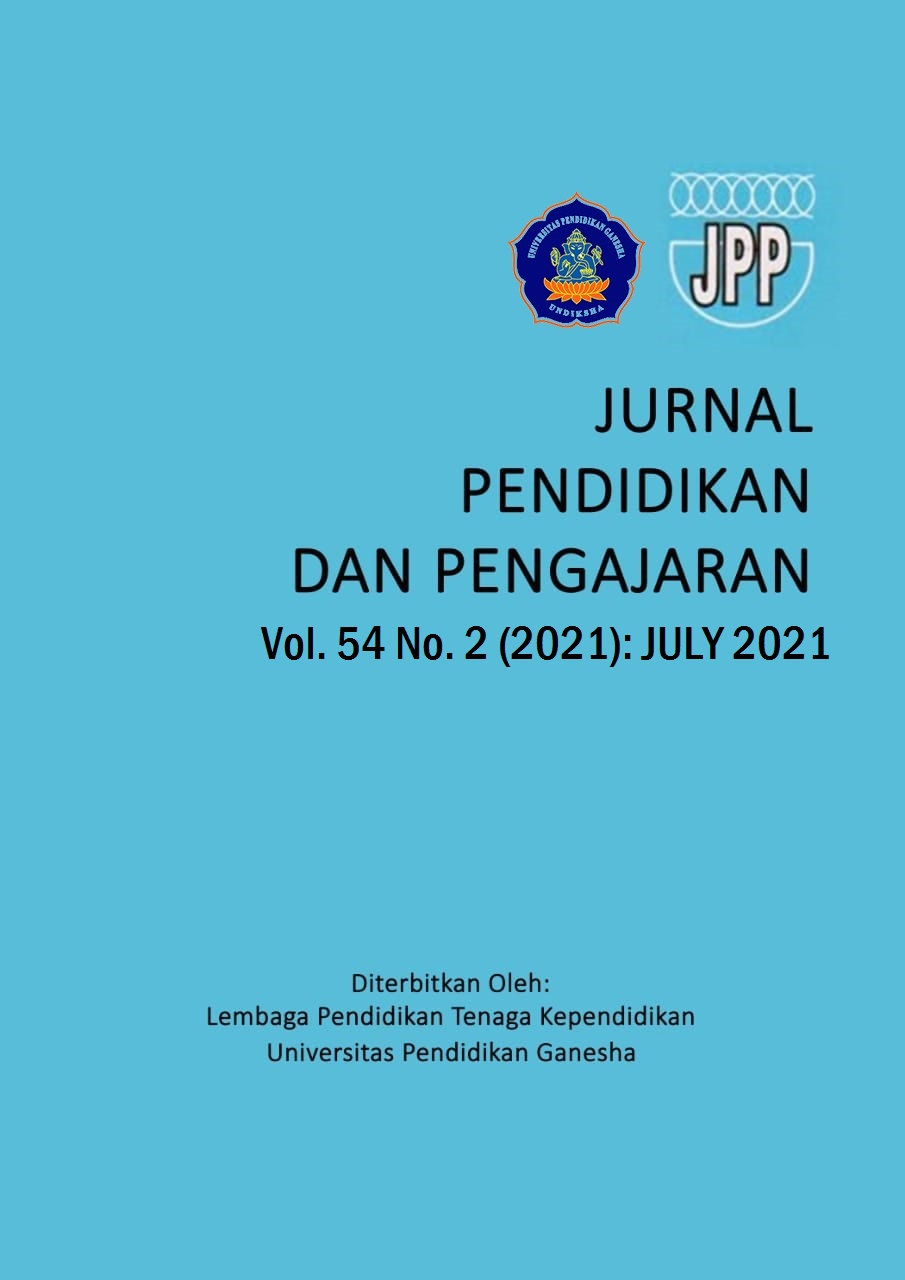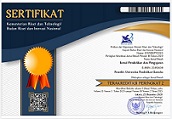Educational Model for Overcoming Stunting Toddlers with Bio Acupressure Massage Using Pure Coconut Oil
DOI:
https://doi.org/10.23887/jpp.v54i2.35837Kata Kunci:
Stunting, education, Bio acupressure massageAbstrak
Educational models to overcome stunting are needed because stunting has a negative impact on the health and function of the body as well as increasing child morbidity. The prevalence of stunting under five in Indonesia in 2019 was 27.67%, in Bali 21.9% and Karangasem 26.23% above WHO 20%. This data is the reason for conducting research in 2020. The aim is to find out whether the educational model of bio acupressure massage using virgin coconut oil can increase appetite, sleep quality and immune power so that stunting toddlers increase height. The research method is quasi-experimental; the research design is nonequivalent control group design. The sample is 50 people with purposive sampling technique. The analysis before and after treatment was carried out by paired sample t-test, the results were that all variables had significant differences (P value> 0.05). Variable differences between groups using t-two independent test with an alpha of 0.05 resulted in a significant difference in appetite (P value = 0.01) and a significant difference in height (p value = 0.020). There was no significant difference between sleep quality and endurance (P value > 0.05). It was concluded that there was a significant difference before and after education on stunting, while between the bio acupressure and conventional groups there was a significant difference in the variables of appetite and height. It is recommended that in overcoming stunting, bio acupressure massage education is the right education.
Referensi
Aryastami, N. K., & Tarigan, I. (2017). Kajian kebijakan dan penanggulangan masalah gizi stunting di Indonesia. Buletin Penelitian Kesehatan, 45(4), 233–240. https://pdfs.semanticscholar.org/d6c/667c6a575f369b4e22605547d1de22d16e48.pdf.
Beal, T., Tumilowicz, A., Sutrisna, A., Izwardy, D., & Neufeld, L. M. (2018). A review of child stunting determinants in Indonesia. Maternal & Child Nutrition, 14(4). https://doi.org/10.1111/mcn.12617.
Budiastutik, I., & Nugraheni, S. A. (2018). Determinants of stunting in Indonesia: A review article. International Journal of Healtcare Research, 1(2), 43–49. https://core.ac.uk/download/pdf/267886697.pdf.
Carotenuto, M., Gallai, B., Parisi, L., Roccella, M., & Esposito, M. (2013). Acupressure therapy for insomnia in adolescents: a polysomnographic study. Neuropsychiatric Disease and Treatment, 9, 157. https://www.ncbi.nlm.nih.gov/pmc/articles/PMC3559075/.
Chirande, L., Charwe, D., Mbwana, H., Victor, R., Kimboka, S., Issaka, A. I., & Agho, K. E. (2015). Determinants of stunting and severe stunting among under-fives in Tanzania: evidence from the 2010 cross-sectional household survey. BMC Pediatrics, 15(1), 1–13. https://doi.org/10.1186/s12887-015-0482-9.
Crookston, B. T., Dearden, K. A., Alder, S. C., Porucznik, C. A., Stanford, J. B., Merrill, R. M., & Penny, M. E. (2011). Impact of early and concurrent stunting on cognition. Maternal & Child Nutrition, 7(4), 397–409. https://doi.org/10.1111/j.1740-8709.2010.00255.x.
De Onis, M., Blössner, M., & Borghi, E. (2012). Prevalence and trends of stunting among pre-school children, 1990–2020. Public Health Nutrition, 15(1), 142–148. https://doi.org/10.1017/S1368980011001315.
De Onis, M., & Branca, F. (2016). Childhood stunting: a global perspective. Maternal & Child Nutrition, 12, 12–26. https://doi.org/10.1111/mcn.12231.
Fitri, L. (2018). Hubungan BBLR Dan Asi Ekslusif Dengan Kejadian Stunting Di Puskesmas Lima Puluh Pekanbaru. Jurnal Endurance: Kajian Ilmiah Problema Kesehatan, 3(1), 131–137. https://doi.org/10.22216/jen.v3i1.1767.
Hall, C., Bennett, C., Crookston, B., Dearden, K., Hasan, M., Linehan, M., & West, J. (2018). Maternal knowledge of stunting in rural Indonesia. International Journal of Child Health and Nutrition, 7(4), 139–145. https://doi.org/10.6000/1929-4247.2018.07.04.2.
Headey, D., Hirvonen, K., & Hoddinott, J. (2018). Animal sourced foods and child stunting. American Journal of Agricultural Economics, 100(5), 1302–1319. https://doi.org/10.1093/ajae/aay053.
Hsieh, L. L. C., Kuo, C. H., Yen, M. F., & Chen, T. H. H. (2004). A randomized controlled clinical trial for low back pain treated by acupressure and physical therapy. Preventive Medicine, 39(1), 168–176. https://doi.org/10.1016/j.ypmed.2004.01.036.
Leroy, J. L., & Frongillo, E. A. (2019). Perspective: what does stunting really mean? A critical review of the evidence. Advances in Nutrition, 10(2), 196–204. https://doi.org/10.1093/advances/nmy101.
Mahmudiono, T., Sumarmi, S., & Rosenkranz, R. R. (2017). Household dietary diversity and child stunting in East Java, Indonesia. Asia Pacific Journal of Clinical Nutrition, 26(2), 317–325. https://doi.org/10.3316/ielapa.688058173877148.
Mehta, P., Dhapte, V., Kadam, S., & Dhapte, V. (2017). Contemporary acupressure therapy: Adroit cure for painless recovery of therapeutic ailments. Journal of Traditional and Complementary Medicine, 7(2), 251–263. https://doi.org/10.1016/j.jtcme.2016.06.004.
Prendergast, A. J., & Humphrey, J. H. (2014). The stunting syndrome in developing countries. Paediatrics and International Child Health, 34(4), 250–265. https://doi.org/10.1179/2046905514Y.0000000158.
Prentice, A. M., Ward, K. A., Goldberg, G. R., Jarjou, L. M., Moore, S. E., Fulford, A. J., & Prentice, A. (2013). Critical windows for nutritional interventions against stunting. The American of Clinical Nutrition, 97(5), 911–918. https://doi.org/10.3945/ajcn.112.052332.
Rokx, C., Subandoro, A., & Gallagher, P. (2018). Aiming high: Indonesia’s ambition to reduce stunting. World Bank.
Saputri, R. A., & Tumangger, J. (2019). Hulu-hilir penanggulangan stunting di Indonesia. Journal of Political Issues, 1(1), 1–9. https://doi.org/10.33019/jpi.v1i1.2.
Semba, R. D., de Pee, S., Sun, K., Sari, M., Akhter, N., & Bloem, M. W. (2008). Effect of parental formal education on risk of child stunting in Indonesia and Bangladesh: a cross-sectional study. The Lancet, 371, 322–328. https://doi.org/10.1016/S0140-6736(08)60169-5.
Sugiyono. (2019). Metode Penelitian Pendidikan. Alfabeta.
Tiwari, R., Ausman, L. M., & Agho, K. E. (2014). Determinants of stunting and severe stunting among under-fives: evidence from the 2011 Nepal Demographic and Health Survey. BMC Pediatrics, 14(1), 1–15. https://doi.org/10.1186/1471-2431-14-239.
Torlesse, H., Cronin, A. A., Sebayang, S. K., & Nandy, R. (2016). Determinants of stunting in Indonesian children: evidence from a cross-sectional survey indicate a prominent role for the water, sanitation and hygiene sector in stunting reduction. BMC Public Health, 16(1), 1–11. https://doi.org/10.1186/s12889-016-3339-8.
Trihono, T., Atmarita, A., Tjandrarini, D. H., Irawati, A., Nurlinawati, I., Utami, N. H., & Tejayanti, T. (2015). Pendek (stunting) di Indonesia, masalah dan solusinya. Lembaga Penerbit Badan Litbangkes.
Unduhan
Diterbitkan
Cara Mengutip
Terbitan
Bagian
Lisensi
Authors who publish with Jurnal Pendidikan dan Pengajaran agree to the following terms:- Authors retain copyright and grant the journal the right of first publication with the work simultaneously licensed under a Creative Commons Attribution License (CC BY-SA 4.0) that allows others to share the work with an acknowledgment of the work's authorship and initial publication in this journal
- Authors are able to enter into separate, additional contractual arrangements for the non-exclusive distribution of the journal's published version of the work (e.g., post it to an institutional repository or publish it in a book), with an acknowledgment of its initial publication in this journal.
- Authors are permitted and encouraged to post their work online (e.g., in institutional repositories or on their website) prior to and during the submission process, as it can lead to productive exchanges, as well as earlier and greater citation of published work. (See The Effect of Open Access)





